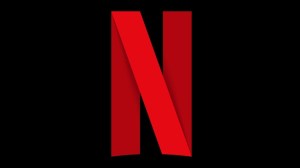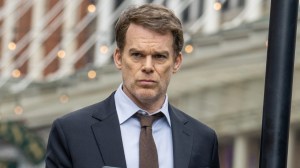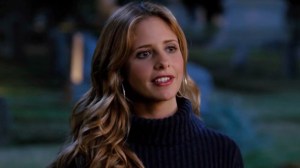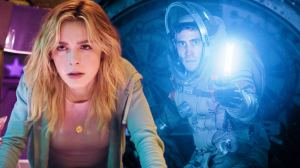“Tawky Tawny, the talking tiger, has absolutely nothing to do with this story — but we thought you might like to see him anyway!” These words can be found in a small editor’s note of 1975’s Shazam! #17 (and, more recently, in 2022’s DC’s Saved by the Belle Reve #1), in order to justify an inexplicable appearance from the titular character’s tiger sidekick. I think about this comic panel on a regular basis, both because it is a delightful way to phrase a justification of that nature, and because it feels like the majority of modern media has adopted its sentiment. If you have been engaged with any movie or television series over the past few years, the topic of cameo appearances has arguably become inescapable. It feels impossible to name a franchise that hasn’t sparked conversation around the potential appearance of either a well-known legacy actor, an established character from a different corner of the fictional universe, or a new character who could eventually hold some larger narrative importance.
Videos by ComicBook.com
Just this week, there have been two major instances of cameos dominating the conversation around genre media. Tuesday’s season finale of Star Wars: The Acolyte very briefly folded in two established and well-known Star Wars characters, with seconds-long appearances that simultaneously teased their roles in potential future stories, and essentially eclipsed most chatter about the actual events of the episode. On Friday, the “final trailer” for Marvel Studios’ Deadpool & Wolverine preemptively revealed one character’s role in the film, with subsequent news coverage and social media posts from the cast and crew making the appearance nearly impossible to avoid. The root of these reveals varies wildly, with Deadpool and Wolverine‘s provoking confusion given the fact that the film is only a week away from debuting in theaters, and Marvel Studios has already gotten flack for similar marketing choices for Doctor Strange in the Multiverse of Madness and The Marvels. But the situation illuminates a larger storytelling trend — an overreliance on cameo appearances, to the detriment of the story they are actually appearing in.
That isn’t to say that cameos should disappear from media altogether, in part because they realistically can’t. The core concept is as old as recorded media itself, present in the films of auteur directors, miscellaneous episodes of sitcoms, and everything in between. And honestly, the trope is popular for a reason — when done particularly well, it can strengthen a story, pay tribute to an established history, or simply provoke genuine joy and surprise among the audience. Depending on who you ask, there are multiple cameos from recent pieces of media that were genuinely successful. Stan Lee’s smattering of onscreen appearances in various Marvel titles helped popularize the modern concept of cameos, even if some were more meaningful than others. Tobey Maguire and Andrew Garfield’s long-rumored multiversal roles in Spider-Man: No Way Home might be chief among them, delivering so many satisfying story beats and electrifying moments that they almost ascend past “cameos” and to supporting players. The CW’s “Crisis on Infinite Earths” crossover also delivered on its eclectic properties from across the DC Universe, including an appearance from Ezra Miller’s movie incarnation of The Flash that no one could have predicted. Even the Season 1 finale of DC’s Peacemaker, which hilariously showed the (now-defunct) Justice League roster arriving late to an alien battle, was gutsy enough to further cement the show as something special.
The problem is when a cameo appearance, or the mere prospect of it, gets close to becoming the primary source of joy within a piece of media. This trend, as we know it in this present moment, crystallized with the Season 2 finale of Star Wars: The Mandalorian, which folded a younger, CGI-aided Luke Skywalker into the previously-unconnected story of bounty hunter Din Djarin and his young ward, Grogu. While Luke’s appearance warmed the hearts of generations of fans, and theoretically made sense within the narrative of the episode, it unintentionally set a precedent for the movies and television shows that would follow. Maybe, if viewers paid attention to the right property at just the right moment, they would ultimately be rewarded with something exciting, like the elusive plastic prize at the bottom of a box of cereal. The very next Disney+ series, Marvel’s genre-bending sitcom homage WandaVision, dedicated part of its press tour to teasing its own “Luke Skywalker moment” — and, arguably, it both did and didn’t deliver. Evan Peters, who played Wanda Maximoff’s brother in a completely separate franchise, joined the show midway through its season… only for his character’s true identity to be a goofy punchline. It was later revealed that Benedict Cumberbatch’s Doctor Strange was expected to reprise his role in WandaVision‘s finale, offering the show’s most obvious equivalent of Luke Skywalker swooping in to help save the day, before pandemic production issues caused it to fall through.
In the years since then, a number of titles have tried (and not always succeeded) to gain their own cheer-worthy moment, with superficial results. Peacemaker creator and current DC Studios co-CEO James Gunn has even voiced his dislike of the trend, arguing that “if a character is in [a] film, they have to have a reason to be there.” The aforementioned Multiverse of Madness introduced an alternate universe’s version of the top-secret group The Illuminati, filled with a mix of recognizable-enough established characters and popular fancasts, only to brutally kill all of them off within a matter of minutes. The long-awaited, Miller-led incarnation of The Flash movie promised to be the culmination of the DC multiverse onscreen, only to deliver a carousel of half-hearted computer-generated images of mostly-dead actors and a confusing cameo from former Batman actor George Clooney. For better or for worse, some of these cameos have little bearing on the movie’s actual plots — The Illuminati are only a speedbump (and an introduction to the concept of incursions) in Doctor Strange’s story, and neither version of Miller’s Barry Allen even acknowledges the visions of other heroes during The Flash‘s final fight. Some, meanwhile, can essentially override the story of the movie at hand, as evident by franchises like Ghostbusters and Jurassic World struggling to balance their original and new ensemble casts.
Sure, these surprise appearances provoke excited responses from audiences, so much so that some titles have started building in applause breaks after potentially-major moments. But the hunt for that reaction — both from the studios making the media, and from the audience members chasing those endorphins — can get in the way of delivering the actual story at hand. The mere prospect of Charlie Cox’s Daredevil cameoing in Marvel’s She-Hulk: Attorney at Law, (something that was confirmed, but ultimately didn’t happen until the penultimate episode) led to weeks of discourse and arguments by viewers who felt like their time was being wasted. It doesn’t feel like a complete coincidence that Cox’s next onscreen appearance in Marvel’s Echo miniseries occurred no more than halfway through the series’ first episode. WandaVision also accidentally stumbled into that kind of waiting game, as fans swore that every new episode would bring the arrival of the demonic villain Mephisto, or would reveal that the occasionally-referenced “aerospace engineer” was secretly a major Marvel character waiting in the wings. While Mephisto does have a connection to Wanda in the comics, either storyline would have randomly overshadowed the show’s actual journey of family and grief — and when the series wrapped with neither coming to fruition, some viewers felt like they had been cheated. (It also doesn’t feel like a coincidence that this specific discourse about projects “wasting viewers’ time” surrounded shows led by female characters, but that’s a conversation for another day.)
Either way, there have been far too many instances of cameo appearances becoming the hook of a specific story, either because of fans’ personal expectations or because of some clever marketing. Up until this most recent reveal, Deadpool & Wolverine had largely displayed the latter, focusing more on its two titular protagonists and less on the slew of rumors about returning or new Marvel heroes. That ambiguity has most definitely built the movie up in fans’ minds, and if even a fraction of those rumored appearances prove to be true, it will be interesting to see how much priority they might take over the film’s actual plot. Marvel’s adaptation of Avengers: Secret Wars, which is scheduled to be released in 2027, is sure to be the climax of our current cultural feeling about cameos. Regardless of whether or not fans have read the two comic incarnations of Secret Wars, they have surely already imagined a massive multiversal crossover where any past, present, or future Marvel actor can and should show up, regardless of their bearing on the plot. Sure, in the words of Shazam! #17, those are heroes and villains who audiences “might like to see” — but is that enough?
Deadpool & Wolverine will be released exclusively in theaters on July 26th.








